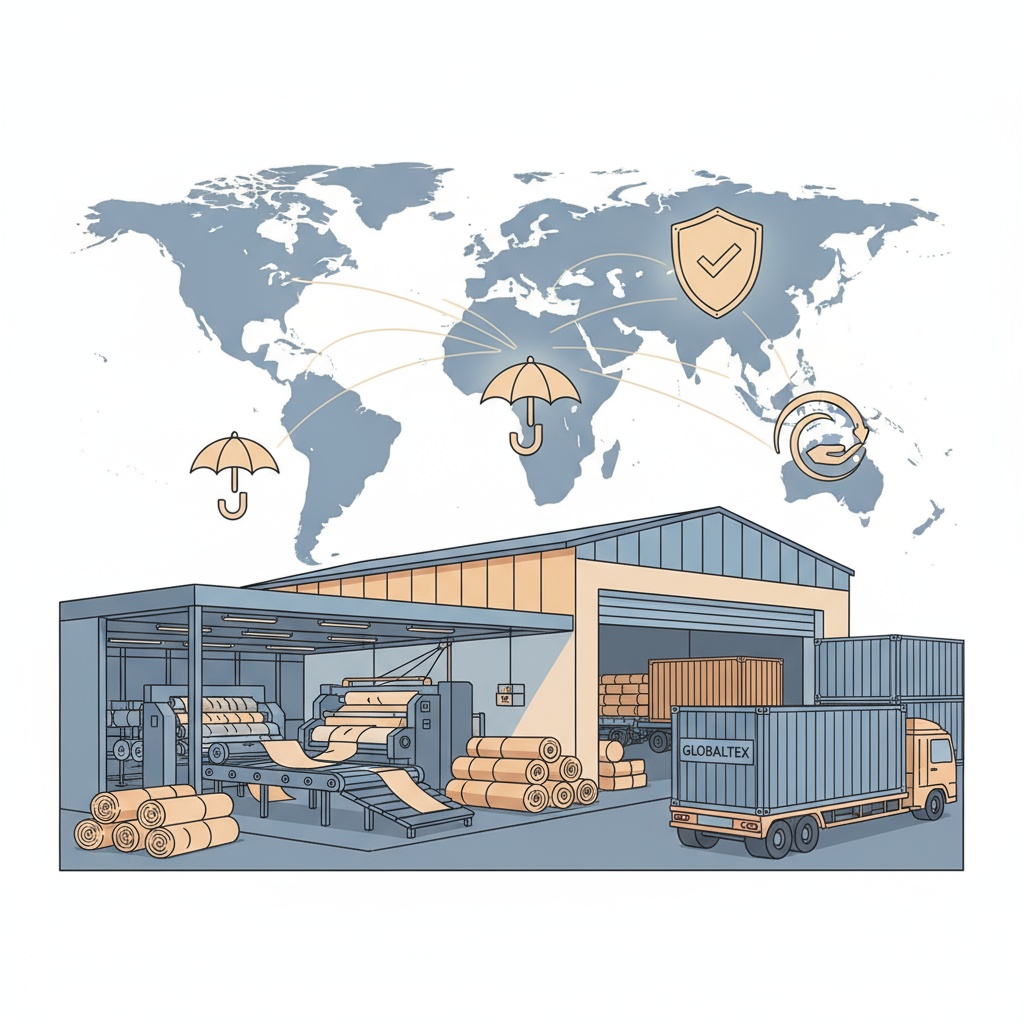Textile and Garment Manufacturers: International Shipping Insurance Essentials
In the intricate world of textile and garment manufacturing, international shipping represents both an opportunity and a significant risk. As global supply chains become increasingly complex, understanding the nuanced landscape of international shipping insurance is not just a recommendation—it's a critical business imperative.

Understanding the Unique Risks in Textile and Garment Shipping
Textile and garment manufacturers face a unique set of challenges when shipping internationally. Unlike many other industries, your products are:
- Often high-value and delicate
- Susceptible to environmental damage
- Subject to complex international regulations
- Vulnerable to theft and counterfeiting
Key Risk Categories
- Physical Damage Risks
Textiles and garments can be damaged by:
- Moisture and humidity
- Temperature fluctuations
- Compression during transit
- Improper handling
- Financial Risks
International shipping exposes manufacturers to potential financial losses through:
- Cargo theft
- Customs delays
- Currency exchange fluctuations
- Contractual non-compliance penalties
- Regulatory Risks
Different countries have varying import/export regulations that can impact:
- Textile composition standards
- Chemical treatment restrictions
- Labeling requirements
- Environmental compliance
International Shipping Insurance: Comprehensive Coverage Options
For textile and garment manufacturers, a robust international shipping insurance strategy should encompass multiple layers of protection:
1. Marine Cargo Insurance
Protects goods during sea, air, and land transportation. Key coverage includes:
- Total loss protection
- Partial damage compensation
- Theft and piracy coverage
- Natural disaster protection
2. All-Risk Policies
Comprehensive protection that covers almost all potential shipping risks, except those explicitly excluded. Ideal for high-value textile shipments.
3. Named Perils Policies
More affordable option that covers specific, predefined risks. Suitable for manufacturers with lower-risk shipping routes.
4. Specialized Textile Coverage
Tailored policies addressing unique textile industry challenges:
- Fabric degradation protection
- Color fastness guarantee
- Specialized storage condition coverage
- Seasonal collection protection
Calculating Insurance Value: A Strategic Approach
Determining the right insurance coverage involves more than just the product's market value. Consider:
- Production Costs: Include raw material, labor, and manufacturing expenses
- Potential Lost Profits: Estimate revenue loss from delayed or lost shipments
- Replacement Expenses: Factor in rush production and expedited shipping costs
- Brand Reputation: Consider potential long-term business impact of shipping failures
Pro Tip
Regularly review and update your insurance valuation. Textile market values and production costs can fluctuate significantly.
Risk Mitigation Strategies Beyond Insurance
While comprehensive insurance is crucial, proactive risk management can further protect your business:
- Detailed Packaging Protocols
Implement strict packaging standards that protect against environmental and physical damage.
- Carrier Selection
Choose shipping partners with proven track records in textile transportation and international logistics.
- Documentation Precision
Maintain meticulous shipping documentation to facilitate smoother claims processes and regulatory compliance.
- Technology Integration
Utilize tracking technologies and real-time monitoring systems to enhance shipment security and transparency.
Emerging Trends in Textile Shipping Insurance
The international shipping insurance landscape is evolving. Stay ahead with these emerging trends:
- Blockchain Verification
Increasing use of blockchain for transparent, tamper-proof shipping documentation
- Sustainability Considerations
Insurance policies now often include environmental impact assessments
- Pandemic-Responsive Clauses
New policy structures addressing global supply chain disruptions
- AI-Driven Risk Assessment
More sophisticated, data-driven insurance pricing and risk evaluation
Conclusion: Protecting Your Global Textile Business
International shipping insurance for textile and garment manufacturers is not a one-size-fits-all solution. It requires a strategic, comprehensive approach that balances thorough coverage with cost-effectiveness.
By understanding the unique risks, selecting appropriate insurance products, and implementing robust risk management strategies, manufacturers can navigate the complex world of international shipping with confidence.
Frequently Asked Questions
Q: How often should I review my international shipping insurance?
A: Annually, or whenever there are significant changes in your shipping routes, product lines, or global market conditions.
Q: Are handmade or custom textile shipments more challenging to insure?
A: Yes, they often require more specialized coverage due to higher per-unit value and unique production characteristics.
Q: Can insurance cover intellectual property risks in international shipping?
A: Some comprehensive policies offer protection against design theft and counterfeiting, but specifics vary by provider.


 0330 127 2333
0330 127 2333